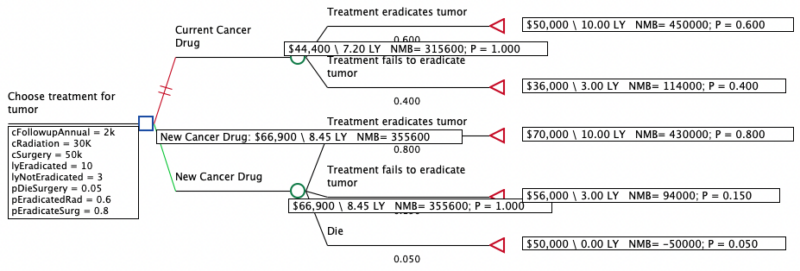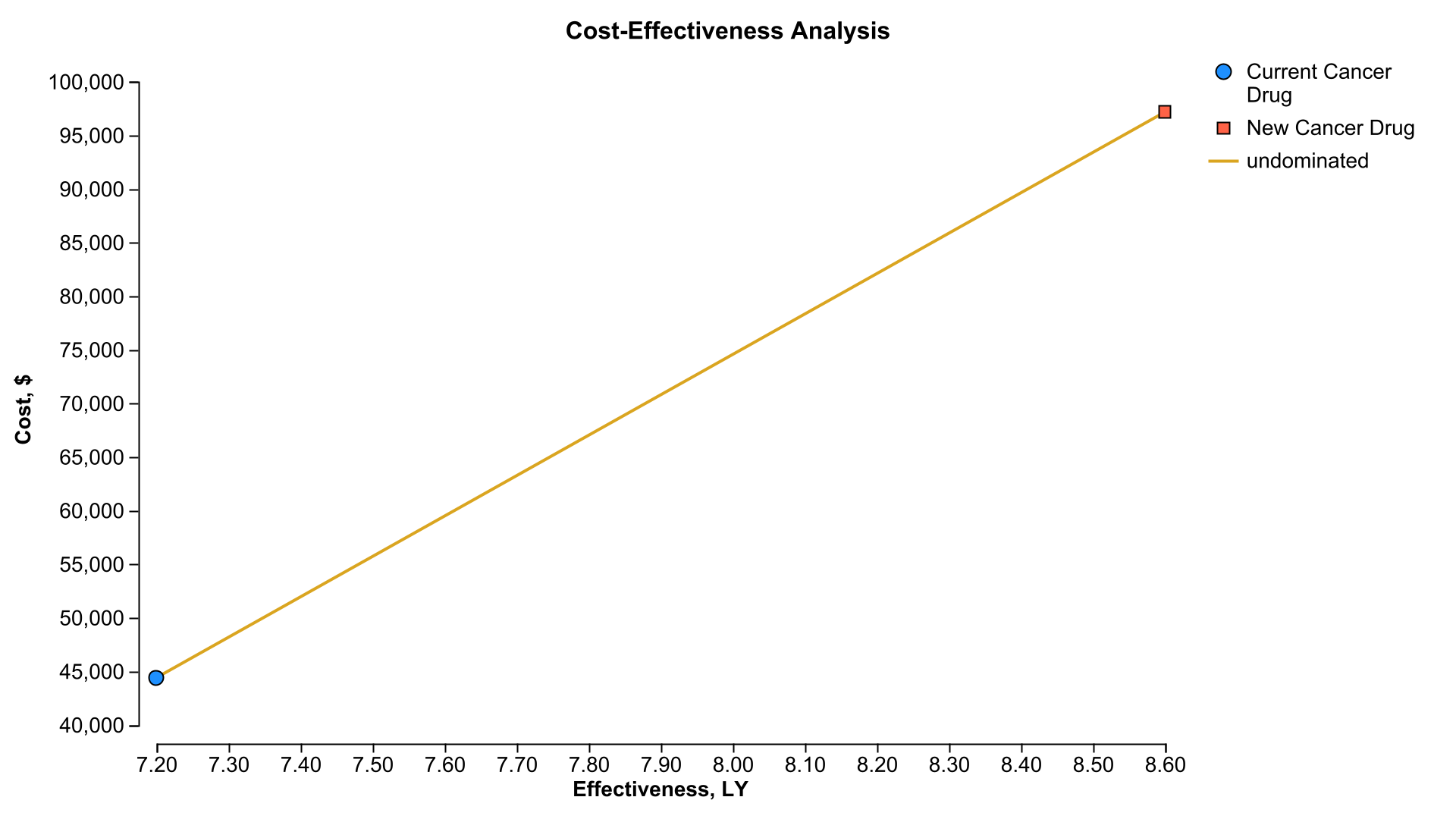Cost-Effectiveness Analysis
Generate Cost-Effectiveness Analysis reports and graphs quickly and easily with TreeAge Pro
Cost-Effectiveness Analysis is commonly used to choose the best healthcare strategies based on both cost and health outcomes.
TreeAge Pro includes built-in tools and reports to quickly generate Cost-Effectiveness Analysis results from your health economic model.
Calculate Average Cost and Effectiveness Values by Strategy
TreeAge Pro automatically calculates the average cost and effectiveness for each strategy within your model. These strategy averages form the basis of Cost-Effectiveness Analysis.

Cost-Effectiveness Analysis Calculation
TreeAge Pro’s Cost-Effectiveness Analysis calculates the additional cost and the potential health gains related to a switch to a more expensive strategy.
TreeAge Pro then calculates the Incremental Cost Effectiveness Ratio (ICER) the ratio of incremental cost to incremental effectiveness. If the ICER indicates that better health outcomes justify the additional expense, then the more expensive strategy is recommended.
TreeAge Pro seamlessly handles any number of strategies by comparing the Net Monetary Benefit (NMB) of each strategy to determine the most cost-effective.


Integrate with TreeAge Pro analysis tools
Extend your Cost-Effectiveness Analysis with additional analysis tools required for a robust modeling research project.
- Sensitivity Analysis/Tornado Diagrams to assess parameter uncertainty
- Probabilistic Sensitivity Analysis (PSA) to assess overall uncertainty
Run Cost-Effectiveness Analysis on all supported model types
- Decision Trees
- Markov Models
- Partitioned Survival Models
- Patient Simulation Models
- Discrete Event Simulation Models
What is Cost-Effectiveness Analysis and why is it useful in health economics?
Cost-effectiveness is the standard methodology used to compare strategies in health economics. It evaluates treatment strategies or health policies based on the average cost and effectiveness per patient and recommends treatments with good health outcomes that come at a reasonable cost.
Cost-effectiveness analysis is used to balance health outcomes with limited resources in healthcare expenditure. We usually want the maximum health benefits based on the resources available. Health measures or effectiveness measures commonly used are Life Years (LY) or Quality Adjusted Life Years (QALYs). In some cases, there is a Willingness-to-Pay (WTP) which determines the cost we are willing to pay for an additional unit of effectiveness.
Cost-Effectiveness Analysis calculates the Incremental Cost-Effectiveness Ratio (ICER) between pairs of strategies. The ICER is the ratio of the incremental cost versus the incremental effectiveness. The ICER represents how much more we will have to pay to get better health outcomes.
The ICER is often compared to a WTP. If the ICER is less than the WTP, then we can justify the more expensive treatment based on the gains in health outcomes.
